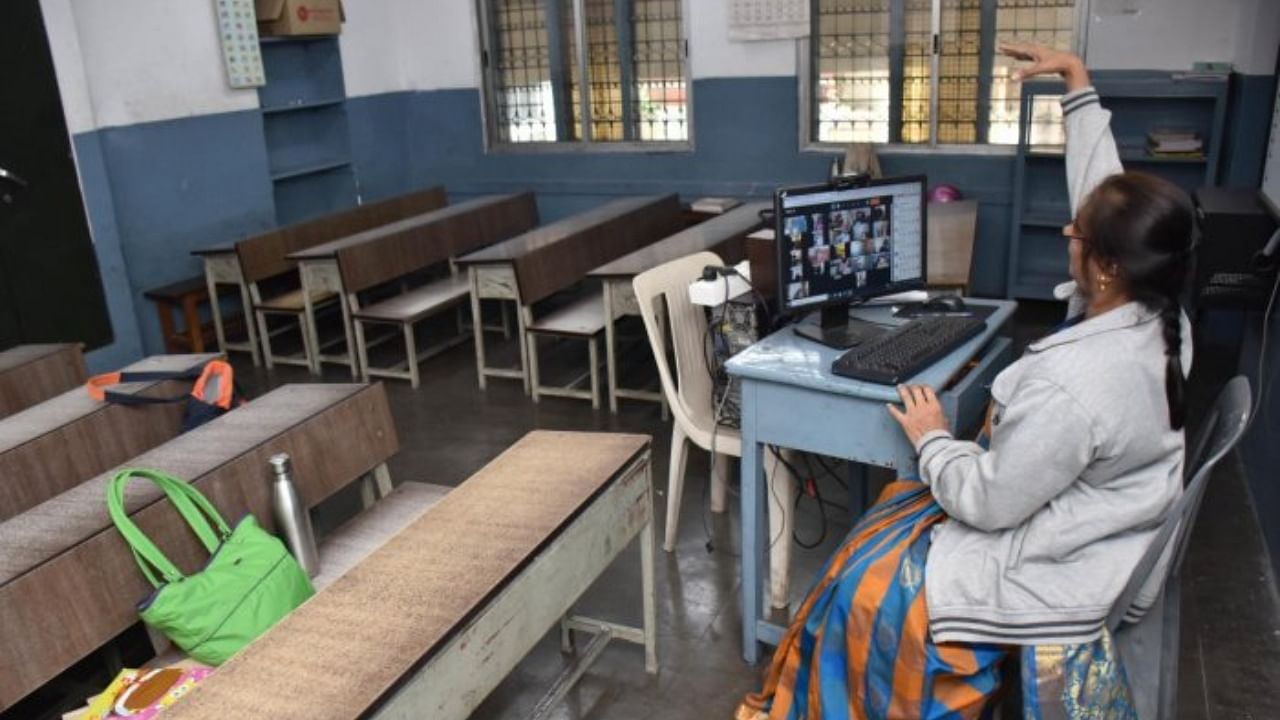
The Ministry of School Education and Literacy recently released the 2021–22 Unified District Information System for Education (U-DISE) report, which provides information about all schools, teachers, and students in India. A wide range of data, including student enrolment, teacher deployment, and school infrastructure such as drinking water, libraries, electricity, and access to computers and the Internet, can be analysed to better understand the state of education in the country.
The push for digitalisation due to the pandemic-triggered school closures, and the emphasis given to digital and online education by the National Education Policy 2020 have made many feel that EdTech is the way to achieve quality universal school education. Nearly one-third (32.54%) of government schools are said to have computers, but this may paint an inaccurate picture of EdTech implementation in India.
Electronic devices are fragile and can have a short life (especially if numerous students use them), unlike a blackboard, which is potentially indestructible. Computers suffer hardware failures. Software bugs, virus attacks, and obsolescent versions can make computers dysfunctional. The school may not have an uninterrupted power supply, which is why U-DISE provides statistics on schools with “computers” as well as schools with “functional computers.”
Even if the basic setup, such as a lab room, electricity, hardware, and software, is available, teachers may not be ready or trained to use the computers. And the pressures of completing the syllabus and preparing students to write examinations discourage them from using computers for teaching. Syllabi and examinations do not require knowledge of technology, and the 40-minute period is too short to design a tech-integrated lesson. As a result, even if the school has functional computers (in working order), they may not be “functioning”. Government schools in India are thus sites for both computer graveyards (housing dead equipment) and computer museums (housing unused working specimens).
One exception is Kerala, where, by and large, government schools have computers that are actually used. Firstly, all teachers are trained to use computers, not only for computer literacy, but also for subject teaching. Subject-based technology integration is a part of Kerala textbooks. The choice of high-quality free and open-source software allows widespread use, ensuring scalability. It provides the ability to regularly upgrade to the latest versions free of cost, which facilitates sustainability. Decentralised hardware procurement is a more recent innovation. Schools in Kerala can decide if they want computers and approach different funding sources (from the MLA to the panchayat to the community). Decentralisation promotes a strong sense of ownership over the lab, leading to higher computer usage.
On the other hand, the current model of centralised funding in education, where most investment decisions are taken in Delhi or state capitals, is arguably a key cause of the dismal state of infrastructure in government schools. The Right to Education Act (RTE) is clear; Section 22 requires the School Management Committee (SMC), consisting of parents, to prepare, in collaboration with the teachers, the annual ‘School Development Plan’ (SDP), provisioning for infrastructure and other requirements of the school. While the RTE requires that government and local authority grants be based on such plans, the union and state governments’ education budgets are completely unaffected by these SDPs. Untied funding to schools, allowing them to spend based on their local priorities and wisdom (within broad guidelines provided by the union, state, and local governments), would better serve the cause of quality public education.
The SMC may want to build a classroom, hire a music guest teacher, buy library books, or make their toilets functional before buying computers. Such untied grants would also promote school autonomy and teacher agency, two very important factors for school quality. Using digital technologies to support participatory planning and budgeting (Barcelona, Spain, is an example where such a budgeting programme has thrived) to increase transparency and accountability, would strengthen the public education system.
The Ministry has made information on each school available on the U-DISE site. Potentially, SMCs can access this information on their phones to validate it through actual verification of their school’s infrastructure, as well as use it as an input in their preparation of the SDP. This information, with some digital technology extensions, can also support the SMCs in school management and school social audit (pioneered in MNREGA) activities. Technology could help in grievance redressal and problems relating to the school’s infrastructure and functioning.
Traditionally, community and technology are seen as two divergent resources for school education. However, technology in education can go far beyond providing computers to schools, and support SMCs in effective school development planning and monitoring, which is a key missing piece in the Indian education quality puzzle.
(The writer is a director of IT for Change)